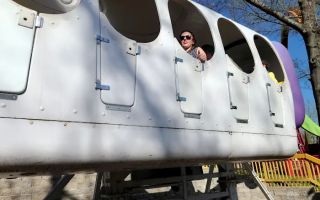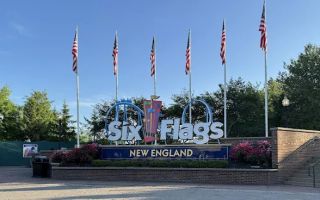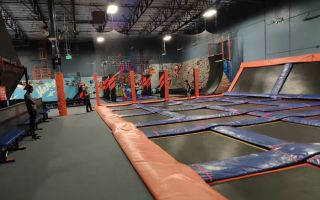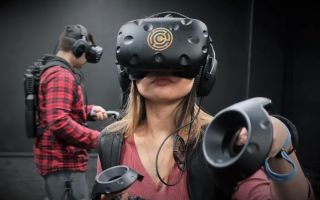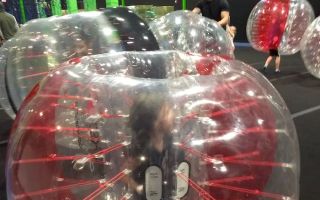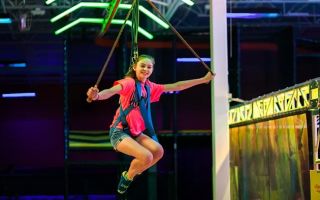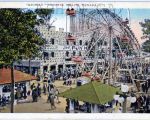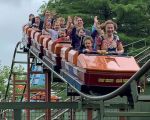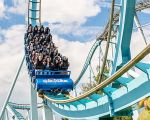- why-virtual-queues-are-redefining-the-amusement-park-experience - Why Virtual Queues Are Redefining the Amusement Park Experience
- how-virtual-queue-systems-work-on-amusement-park-rides - How Virtual Queue Systems Work on Amusement Park Rides
- real-examples-of-theme-parks-using-virtual-queues - Real Examples of Theme Parks Using Virtual Queues
- benefits-of-virtual-queue-systems-for-visitors-and-parks - Benefits of Virtual Queue Systems for Visitors and Parks
- challenges-and-criticisms-of-virtual-ride-reservations - Challenges and Criticisms of Virtual Ride Reservations
- the-future-of-amusement-park-experiences-with-tech - The Future of Amusement Park Experiences with Tech
1. Why Virtual Queues Are Redefining the Amusement Park Experience
For decades, the biggest downside to amusement parks has been the long lines. Hours of standing in the heat for a two-minute thrill ride has long been the norm. But the rise of amusement park rides with virtual queue systems is changing all of that. These systems allow guests to reserve a place in line using their smartphones or park-provided devices, freeing them up to enjoy other attractions while they wait.
In the U.S., where families often spend hundreds of dollars for a single park day, the value of time is more important than ever. Virtual queuing isn't just a convenience—it's a transformation. Parents with kids no longer have to juggle snacks, sunscreen, and whining toddlers in mile-long queues. Couples and thrill-seekers can now jump from shows to restaurants to shops without missing their ride time. For many, this new system feels like a luxury, even if it costs nothing extra.
A survey by QueueMetrics in 2023 found that 67% of U.S. theme park guests said virtual queue access "significantly improved" their overall experience. That’s a powerful testament to the growing demand for digital queue innovations.
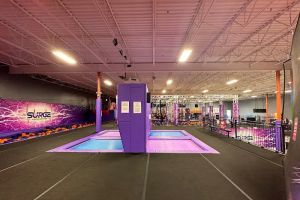
Surge Adventure Park
24 E 33rd St, Edmond, OK 73013, USA
2. How Virtual Queue Systems Work on Amusement Park Rides
At its core, a virtual queue system is about managing demand digitally. Guests log into a park’s mobile app or use designated kiosks to select a ride and a return window. Once reserved, the system holds their place in line virtually while they explore the park.
Each system varies slightly:
- Timed Entry: Guests receive a set return time, like a digital boarding pass.
- Rolling Queues: Guests are called back in real-time as availability opens.
- Group Reservations: Some rides allow linked parties to queue together via app syncs.
For example, Disney’s Genie+ allows guests to make ride selections throughout the day and "check in" when it’s their turn. Universal's Virtual Line system works similarly, letting users choose a return time slot for top attractions like the “Fast & Furious – Supercharged” ride.
The use of wearable tech is also on the rise. Parks like Dollywood and LEGOLAND have experimented with RFID-enabled wristbands that automatically manage queue placements and notify users when it’s time to return.

Noah's Ark Waterpark
1410 Wisconsin Dells Pkwy, Wisconsin Dells, WI 53965, USA
3. Real Examples of Theme Parks Using Virtual Queues
Some of the most prominent amusement parks in the United States have adopted virtual queue systems, often customizing them for their brands and audiences. Here are a few standout examples:
3.1 Walt Disney World (Florida)
Disney’s Genie+ and Lightning Lane system replaced the old FastPass. Rides like Star Wars: Rise of the Resistance and Guardians of the Galaxy: Cosmic Rewind often rely entirely on virtual queues, especially during peak season.
3.2 Universal Studios (California and Florida)
Universal’s Virtual Line system is used on popular rides such as Jimmy Fallon’s Race Through New York and Hagrid’s Magical Creatures Motorbike Adventure. Guests book via the official app or digital kiosks scattered throughout the park.
3.3 Six Flags Parks
Select Six Flags parks have begun rolling out their “Flash Pass” virtual reservation system, which allows visitors to book ride times and minimize standing in line. While it’s a paid service in many locations, guests rave about its efficiency.
3.4 SeaWorld and Busch Gardens
These parks use Quick Queue systems for many of their high-demand rides, combining virtual queues with traditional line-skipping perks. Some rides even allow day-of reservations via the park’s app.
At Hickory Dickory Park, efforts are underway to implement a test-run of a hybrid virtual queuing and gamified waiting experience, combining wait times with interactive storytelling, a unique approach aimed at keeping families engaged.
4. Benefits of Virtual Queue Systems for Visitors and Parks
For guests, the benefits of amusement park rides with virtual queue systems are obvious: less time waiting and more time enjoying. But the advantages go far beyond personal convenience.
From a business perspective, virtual queues lead to:
- Increased Spending: When guests aren't stuck in line, they’re more likely to browse gift shops, grab food, or engage in paid experiences.
- Improved Guest Satisfaction: Shorter physical lines often translate to better online reviews and higher guest retention.
- Better Crowd Flow: By distributing people across the park more evenly, parks can reduce congestion in key areas.
A 2022 study by Theme Park Economics Group reported that parks with integrated virtual queue systems saw a 23% rise in per-capita revenue and a 38% boost in positive guest feedback.
5. Challenges and Criticisms of Virtual Ride Reservations
Despite their advantages, virtual queue systems are not without flaws. One of the biggest concerns is accessibility. Not every guest owns a smartphone or has reliable internet access in the park. Others struggle with apps or feel overwhelmed by constant scheduling.
There's also criticism that these systems can create a “digital elite,” where tech-savvy guests or those willing to pay extra receive an unfair advantage. For example, some rides offer virtual queue reservations only through paid upgrades.
Moreover, the spontaneity of a park visit may be lost. Guests who enjoy wandering freely may find the structured nature of timed entries frustrating.
Some parents have also noted that managing ride schedules for multiple children across various attractions can become stressful, defeating the purpose of making the visit easier.
6. The Future of Amusement Park Experiences with Tech
Virtual queue systems are just the beginning. As technology advances, amusement parks are looking to merge queuing with immersive entertainment. Augmented reality scavenger hunts, real-time crowd heat maps, and AI-driven personalization are on the horizon.
Imagine a system where your favorite rides are pre-reserved based on past visits, your location is used to suggest low-wait attractions nearby, and queue-free rides are accompanied by interactive digital games that tell a story while you “wait.” At Hickory Dickory Park, prototypes like these are already being tested in family zones.
As parks continue to innovate, virtual queuing will evolve from being a convenience to an integral part of the amusement experience. Those who embrace this technology will not only keep guests happier—but also gain a competitive edge in a rapidly modernizing industry.

